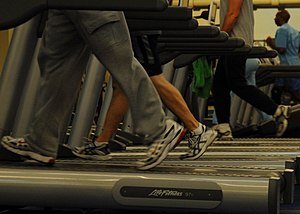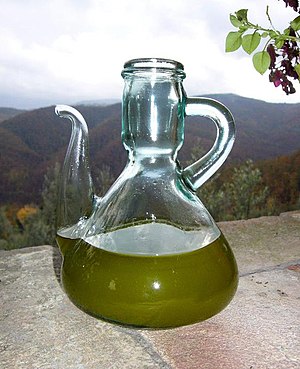
This is one of the first of a series of interviews with inspirational people in the health and fitness world. My first guest is Phyllis Gaukel. Phyllis is an all natural female bodybuider. She competes in shows that are drug tested so, all the competitors compete on the same level.
What I think is so inspirational about Phyllis is that she competed and won three of the top natural amateur shows just 15 months after have a beautiful little baby girl. That is an amazing feat for anyone.
So, here are some questions I asked Phyllis to find out a little more about her.
Darvis. Where were you born and where did you grow-up?
Phyllis. I was born and raised in Madison, WI.
Darvis. Who has been the greatest influence in your life and why?
Phyllis. My mom and my husband have been my greatest influences. My mom, also named Phyllis, was, and is always there for me. After my daughter was born she moved to Raleigh to help us, and be an active part of her life. In my youth and even now my mom has given me the confidence in following my dreams and gave me my strong faith in God. Eric, my wonderful husband, pushes me in the gym and shows me the patience and love that I need since I am a perfectionist and very hard on myself at times.
Darvis. What is your profession?
Phyllis. I am a third grade teacher at St. Raphael Catholic School. The kids love when I flex my muscles, race them, and do push-up contests with them.
Darvis. What got you into bodybuilding?
Phyllis. I was always a “Tom Boy” and loved lifting. I got more educated in this activity when I met Eric, my handsome husband. He is a big lifter and is also a scientist. With his expertise in science he has helped me better understand food combinations and the vitamins and minerals the body needs. In the gym we inspire each other to do that extra rep and just being together makes lifting that much more enjoyable.
Darvis. How long have you been competing?
Phyllis. I did a competition in Oct of 2006 when I was 23, then Eric and I moved to NC from Wisconsin. I was planning on doing another show in 2008, but 10 weeks out I was blessed with a pregnancy. Hence, I did not compete again until June of 2010 and I did three in that month.
Darvis. Tell me a little about your very first time on the stage. What was going through your mind?
Phyllis. The show was in INBF show in WI and it was a very popular competition. There were any amazing athletes and you keep comparing yourself to each one there. It can make you doubt yourself tremendously. Doing the show was freighting and the training was mentally tiring since it was my first time. I felt like a guinea pig the whole time- trying this and that and not really knowing how my body would react. I did it and did well for my first show…I learned a lot about my body and how best to treat it for peak condition.
Darvis. You’ve had an awesome year in bodybuilding. First place and overall winner of three major shows. Tell me a little about each.
Phyllis. I did an NGA, a NPA, and an INBF show. The NGA and the INBF were amazing, professional, and the INBF show was the most popular. I loved every moment! The NPA was very disappointing in may respects. The venue was a highschool, it was not organized, very small showing, etc…
Darvis You compete in All Natural bodybuilding competitions, what does that mean?
Phyllis. You take a polygraph test before the show and if you are an overall winner you also have a urine analysis test too. Now that is a real all natural show!
Darvis. You have a little girl how old is she?
Phyllis. I have an 18 month old. She was a big girl at 8 lbs 14 ounces and almost 22 inches. God blessed us with her on Feb. 5th , 2009.
Darvis. Any other children?
Phyllis. Not yet, but Eric and I would love a larger family!
Darvis. Bodybuilding is a very demanding sport. How do you handle being a wife and mother and being a competitive bodybuilder?
Phyllis. I live on 6 hours of sleep during the school year, and it is pretty much full-speed ahead until I go to sleep. I have a very supportive husband and we have a great relationship. My training is always consistent, but does change in in the summer and on vacation breaks than it is during the school year. I use more machines and do more super sets during the school year and more free weights and heavy lifting in the summer when I have more time. With having high expectations in the gym, at school, and as a mom and wife it is hard and there are many times I feel that mother and wife guilt. However, I need to remind myself that I have a GREAT job. I love teaching, I love kids, and I do get a lot of time off to be a mom and train the way I want. In regards to competing, I have decided to only do competitions in the summer, so to lessen the stress on me and my family.
Darvis. How do you get ready to compete? When do you start training for a show?
Phyllis. I increase aerobic and lower my carb intake…I tweek it all based on what I see in the mirror. I have only done four shows…was getting ready for one in 2008, but 10 weeks out I found out I was pregnant =) The time I allow myself really depends on what I look like on off-season. The least amount of time would be 12 weeks because my body responds best to, “Slow and steady wins the race.” If you cut too fast you can lose muscle and over train.
Darvis. What’s your training program in competition mode?
Phyllis. It changes based on the mirror, but this last show I was doing 5 hours of aerobic and 5-6 hours of lifting a week. Oh, and I try to do my aerobic in the morning before I eat.
Darvis. What’s your training program off-season?
Phyllis. I lift heavier, but still around 5-6 hours and 3 hours a week of aerobic.
Darvis. What’s your diet like in competition mode?
Phyllis. I have no ticks, my diet is simple and STRICK! I live on egg whites, boiled chicken, broccoli, almonds when needed, oatmeal, and repeat.
Darvis. What’s your diet like off-season?
Phyllis. It is still cautious. I eat like I do above, but eat out more, and enjoy cheese, popcorn, oil on my food, etc!
Darvis. You won your Pro Card. What does that mean?
Phyllis. I can compete for money and prizes on the national level for the NGA and WNBF (this is the pro version of INBF). The NPA was a small show and not a pro-qualifier.
Darvis. Are you planning to compete in any professional shows?
Phyllis. I am not sure because if I did I would only do it in the summer and we are wanting more children, so I am putting it in God’s hands.










